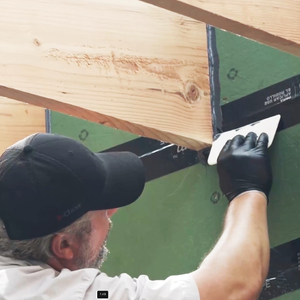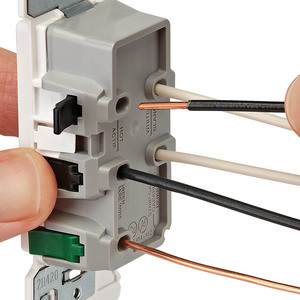Folks – As part of the prep work for repainting the cedar clapboard exterior of my house, I’m working on fixing the cedar claps where they have deteriorated on the southern exposure side of the home.
I’m finding it difficult to replace one or two claps at a time because in removing them it’s very easy to break the ones above and below, so the area being repaired gets bigger and bigger.
I’m wondering whether I can just repair the claps which are only cracked a bit by filling the cracks with caulk. There are also some claps which are intact, but warped so that the bottom edge is pulled out away from the house. I was going to replace these, but I’m wondering if a line of caulk underneath them to prevent rain getting blown up there will do?
I know it’s suboptimal, but surely I can’t be the first to wonder if I really need to rip off half the side of the house. Anyone care to share their clap repair experiences? Many thanks –
Ken in North Granby, CT


















Replies
you need two tools, maybe you already have them......
A reciprocating saw with a metal cutting blade. Reach up behind the bottom of the claps to cut off the nails with visible heads. This loosens the bottom edge of the board.
And a shingle ripper -- one that's been sharpened. Use it to find and cut the blind nails. Then voila, the clap falls on the ground.
Or, yes, you could use caulk. But not the cheap stuff. use a paintable siliconized caulk. But you won't be as happy with the result, no matter how hard you try.
Unless you're the lead dog, the view just never changes.
slit the laps with yur razor knief brfore you do much of anything...
Life is not a journey to the grave with the intention of arriving safely in a pretty and well preserved body, but rather to skid in broadside, thoroughly used up, totally worn out, and loudly proclaiming<!----><!----><!---->
WOW!!! What a Ride!<!----><!---->
Forget the primal scream, just ROAR!!!
Thanks - I'll see if I can find one of those shingle rippers - think I saw one at the big box.
I had already tried my recip saw on the nails. Between the awkward angle and the saw grabbing and lurching into the wall I was still breaking the claps. However, I tried a hacksaw blade just held in my hands and that cut the nail fairly well. A bit more work, but I may cobble up a handle which should help.
Ken
I suppose it goes without saying that the replacement siding should be back-primed. Will go a long way towards preventing curling.
Or if you can find some old (reclaimed) cypress siding that matches the profile, that stuff is much more stable and resistant to warping/splitting. (It is a lot softer, though.) I think it was used on a lot of homes (at least as far north as Kentucky) prior to WWII.
> .... I'm wondering if a line of caulk underneath them to prevent rain getting blown up there will do?
What I've heard about it is that claps shouldn't be caulked, they're supposed to breathe. It's like stucco, the water stops at the tar paper or whatever that's behind the decorative material. Water getting in isn't a problem so long as it has a way to get out again. That's the theory behind the design. Claps or stucco only serve to keep the sun and wind off the moisture barrier.
If that explanation is in fact correct, then the crucial issue is to not eff up the moisture barrier while doing this work. Likely others who know better than I will comment here.
-- J.S.
Most clapboards are made by resawing a 1x6 board diagonally. This often will cause the clapboards to belly, either curling up or bowing out. You can't re-nail these or they will split. If they were installed with nails every eight inches, the nails would have helped to hold the clapboard from moving so much.
Repairing and replacing clapboards isn't a job for the impatient or those with ham fists. You have to take your time and be methodical or you will end up replacing the whole wall. In some cases, that's not a bad idea. If your siding is split and curled, it isn't doing it's job in helping to keep out air and weather. Caulking is a temporary fix since the clapboards will continue to move and break those joints. All the hard work you put into painting will be shorter lived. You will have paint flash problems trying to cover a smeared on mess of caulking. If you don't fix things correctly this time, you will have to do it eventually. Too bad, good clapboard jobs can last 200 years, poor ones barely make it 10.
Beat it to fit / Paint it to match
Hammer, thanks. I guess the "do it now or redo it later" was kind of what I thought might be the case, but I'm glad to actually hear it. At least now I won't wonder if I'm wasting my time and $$$.
Ken
I like to run my saw right below the good board above the bad one ,set the depth so you cut thru about 95% of the bad board then pry out and snap free the bad board.Then pry up on the good board and pull out your left over rip.
Then when I put the new board back I may cut it down so that it bumps up to the old nails if it is required but I usually have pretty good luck getting the nails out.
ANDYSZ2
WHY DO I HAVE TO EXPLAIN TO FRIENDS AND FAMILY THAT BEING A SOLE PROPRIETOR IS A REAL JOB?
REMODELER/PUNCHOUT SPECIALIST